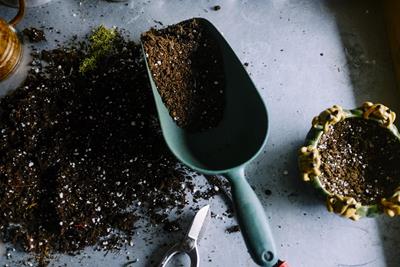
Thursday June 16, 2016
 Growing
Growing
As a Colorado resident, it is your right to cultivate your own medicine right where you live. Though cultivating cannabis indoors is a great way to keep your grow going strong, growing marijuana outdoors can net a much larger harvest for little more than the price of a few marijuana seeds or clones.
But growing marijuana outdoors requires a bit more in the way of soil prep, as most of Colorado’s soil is not ideal for cannabis cultivation and must therefore be treated with a few key additives. To understand what type of additives your soil needs, let’s take a look at the type of soil you already have.
Different Types of Soil in Colorado
There are three basic types of soil in Colorado: clay, sandy and loamy. Though cannabis will grow best in loamy soil (which is a combination of sand, clay and organic matter), it can be planted in other soil types, as well, as long as they have been treated with specific soil additives.
Clay soil, for example, is very dense with poor drainage and minimal air-flow. Though clay soil can hold on to nutrients well, it can also hold onto mineral deposits like salt, which can stunt the growth of the plant. To amend clay soil, try adding organic matter like compost or grass clippings, and toss in a few garden worms to aerate the soil while you’re at it.
On the flipside of that coin are sandy soils. Sandy soil has superior drainage capability (which could be problematic in dry areas) and a near inability to retain nutrients. You can amend sandy soil with organic matter to help lock in moisture while providing vital nutrients to the plant.
Ideal Soil for Growing Marijuana Outdoors
The ideal soil in your cannabis garden will be soft and fluffy with a dark color and an earthy scent. No matter what the condition of your soil now, you can amend it to create an ideal grow medium for your plants by tilling in organic materials like compost, peat moss or fish emulsions.
Next, confirm that the pH level of your soil is ideal for your cannabis crop by testing a small sample of your soil with a home testing kit. Because a soil’s pH directly affects its nutrient availability, it is vital to ensure that you have the proper pH level during each phase of your grow.
The result of a pH test will be a number ranging between 1 to 14. Anything below 7 is acidic while anything above 7 is alkaline with 7 being neutral. Ideally, the soil during vegetation should have a pH level between 7.1 to 7.4 whereas the flowering period should have a neutral pH. By maintaining a balanced pH level, you can reduce the need for secondary and micronutrients.
To increase the pH level of your soil, add finely ground lime or wood ash to the mix at least a few months prior to planting. To decrease the pH level, you can add aluminum sulfate for immediate improvement or sulfur for a more long-term approach.
Using Compost in Your Cannabis Garden
We cannot speak highly enough about compost. Not only does composting reduce the amount of waste that ends up in a landfill, but it can serve as an excellent food source for your cannabis garden. To create compose, just toss anything organic into a bin or pile, add time, heat and air-flow, and in about a year you’ll have a healthy pile of nutrient-rich plant food that your cannabis plants will love. There are many surprising things that you can compost (basically, anything that does not contain chemicals and will decompose) so don’t be shy; toss it in.
Let it Grow
Once you’ve prepared your soil, it’s time to plant your cannabis seeds. To keep your set-up compliant, avoid growing more than your six-plant max and keep a close eye on the gender of cannabis plants so you can pull all males before your females start flowering. Also, remember to keep your plants locked securely away (especially if minors will be frequenting the area) and out of public view in order to stay on the right side of the law.
Finally, don’t forget to plant a few companion plants to help keep pests away and improve plant growth. You can also supplement nutrients as needed to improve plant growth and increase oil production. Check out Cannabis Training University to learn more about soil additives for a successful cannabis grow.
By the way, growing cannabis is not as easy as it sounds. It takes great attention to detail, patience and a lot of love. Don’t get frustrated the first time (or two), rather continue learning, honing your gardening skills and you’ll have incredible, homegrown flower in no time.
Growing cannabis in Colorado can be very rewarding. By prepping your soil by adding the proper nutrients, you can have a personal cannabis garden that’s sure to be the envy of your friends.
Do you have outdoor cannabis gardening tips that you’d like to share? We’d love to hear them.
Photo credit: Unsplash







